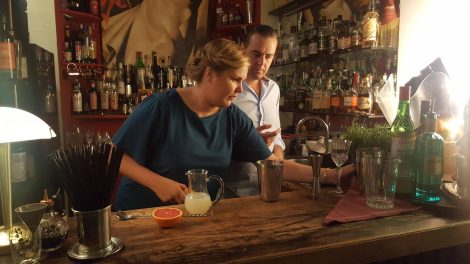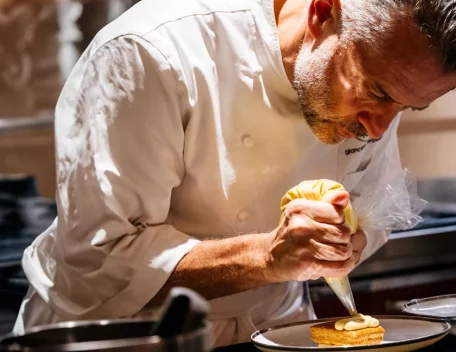The date was November 3rd, 1987 when Il Gambero Rosso – at the time an insert of the Il Manifesto newspaper – published another Manifesto, the one issued by Slow Food. Signatures on the document belonged to Dario Fo and Francesco Guccini, Sergio Staino and Valentino Parlato plus a group of thinkers capable of widespread and forward approach such as Folco Portinari, Gina Lagorio, Enrico Menduni and others in addition to, obviously, Carlo Petrini and Stefano Bonilli. These were the people who put together such a diverse think tank. One unrivalled and soon destined to influence politics and culture.
Reading this manifesto, this collation of utopian intentions, this list of NOs to the ‘80s world – a world whose supreme value was velocity countered in the document by the importance of slowing down – would suggest an abstract program founded on ideals more than on solid ideas. The manifesto appeared as something more soul stirring than to bring an actual change in people’s lives. But this was not the case. That manifesto is perhaps the most brilliant example of utopia turned history. A revolution brought forth from a mutual sentiment of equality and desire for change in values and which resulted in a worldwide impact. More than a political movement, more than a cultural current, even more than a spiritual denomination, Slow Food was able to convey energies and knowledge and thus operate a change of planetary resonance: millions of people, farmers, artisans, cooks and entrepreneurs in 160 countries worldwide agreed to undersign the motions launched on November 3, 1987 for food that was good, clean and fair (the slogan came later). It all started with a handful of sentences penned by Folco Portinari such as “Against those – who are the majority – who confuse efficiency with frenzy, we offer a vaccine for an adequate portion of sensual pleasure assured, to be practiced in slow and prolonged enjoyment” or “slow-food is cheerfulness, fast-food is hysteria” written in a visionary and inspired style that at times echoes that of certain artistic manifestos of the early Twentieth century.
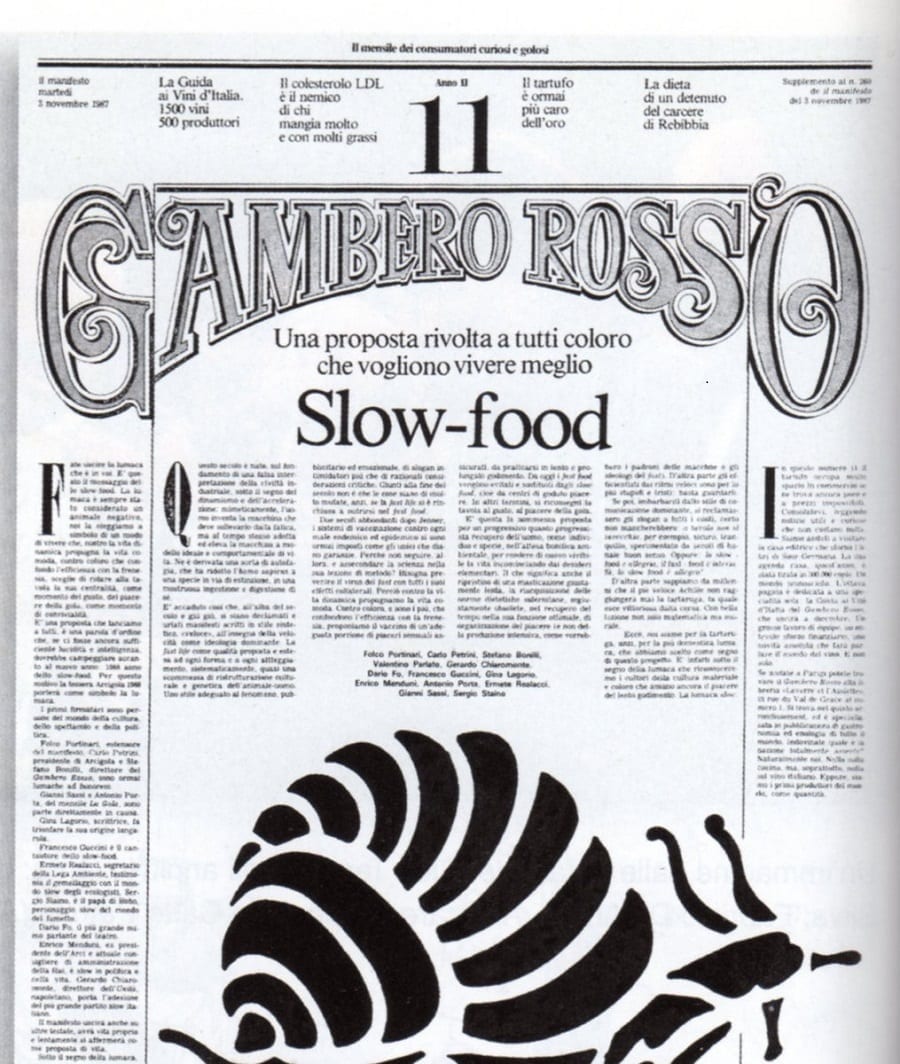
Behind these words, there was already Arcigola, born in 1986 (as a "movement for protection and the right to pleasure" starting from the privileged place at the table, a synthesis of history, culture, conviviality) and transformed in 1989 into Slow Food, in the historic Paris meeting hosted at Opéra-Comique.
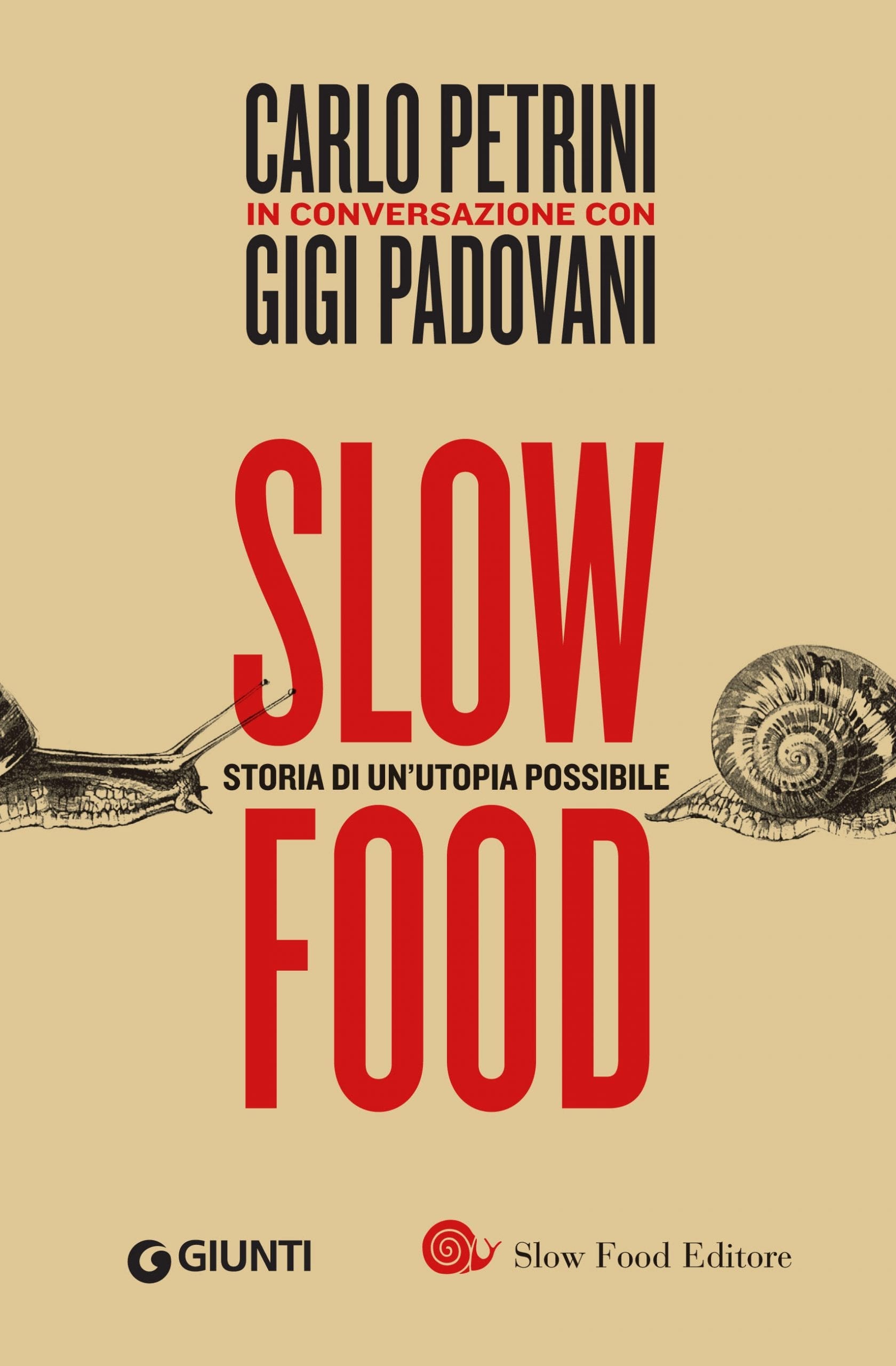
This story, which reaches the present day, is Gigi Padovani's re-release of the volume Slow Food. History of a possible utopia, released in 2005 with the titleSlow Food Revolution. From Arcigola to Terra Madre. A new culture of the book by Carlo Petrini and Gigi Padovani (Rizzoli 2005). Twelve years divide the two releases, faithfully reported in the latest version that has been deeply rewritten and updated to include the voice of others conditioned by Carlo Petrini’s vision, such as Guido Barilla, Alessandro Ceretto, Oscar Farinetti and Giuseppe Lavazza, to mention a few. This book carefully reports the evolution of the historical movement starting with the very words published 30 years ago on Gambero Rosso and which we are offering again today.
The Slow Food Manifesto
This century was born on the basis of a false interpretation of industrial civilization, under the sign of dynamism and acceleration: mimetically, man invents the machine that needs to lift it from fatigue but, at the same time, adopts and raises the machine to ideal and behavioural model of life. The result was a sort of autophagy, which reduced the Homo sapiens to a species in danger of extinction, in a monstrous ingestion and digestion of himself.
It happened then, at the dawn of the century and onwards, that short-lived, "fast" manifestos, expressing speed as a dominant ideology, were shouted and screamed. Fast-life as a quality proposed and extended to every form and attitude, systematically, almost became an ideal cultural and genetic restructuring of the man-animal. A style appropriate to the phenomenon, advertising and emotional, made of intimidating slogans rather than rational critical considerations. At the end of the century it is not that things have changed much, in fact, the fast-life is now confined to eating fast food.
Two centuries after Jenner, vaccination systems against any endemic and epidemic maladies have now become the only way of offering guarantees. Why not follow, then, and support science in its lesson of method? We must prevent the virus of "fast" with all its side effects. Therefore, we advocate comfortable life versus dynamic life. Against those – who are the majority – who confuse efficiency with frenzy, we offer a vaccine for an adequate portion of sensual pleasure assured, to be practiced in slow and prolonged enjoyment. Fast-food products should now be avoided and replaced by slow-food, as in centres of pleasure. In other words, we should return the table to taste, to gusto and the pleasures of the palate.
This is the proposed bet for a progressive recovery of man, both as an individual and a species, in the expectation of environmental rejuvenation, to make life liveable again, starting with man’s basic desires. This also means adapting back to a fairly slow mode of chewing, duly restoring obsolete Salernitic dietary norms in the recovery of time in its optimum function of organizing pleasure (and not of intensive production, as preferred be the owners of machines and fast ideologists). The fast-paced efficient are mostly stupid and sad: just look at them.
And in the style of barbaric dominant communication, you need to reclaim slogans at all costs, here are a few: you don’t age at the table – for example – sure and experimented for centuries of common sense.
Or: Slow-food is cheerfulness, fast food is hysteria. Yes, slow-food is cheerful!
We have known for millennia that fast-paced Achilles will never catch up to the tortoise, which victoriously wins the race. A fine mathematical and moral lesson.
Therefore, we’re on the side of the tortoise, even more so, we’re on the side of the domestic snail which we have chosen as our project’s symbol. It is indeed under the sign of the snail that we will recognize devotees of material culture and those who still love the pleasures of the slow enjoyment. The snail is slow.
Folco Portinari
Carlo Petrini
Stefano Bonilli
Valentino Parlato
Gerardo Chiaromonte
Dario Fo
Francesco Guccini
Gina Lagorio
Enrico Menduni
Antonio Porta
Ermete Realacci
Gianni Sassi
Sergio Staino

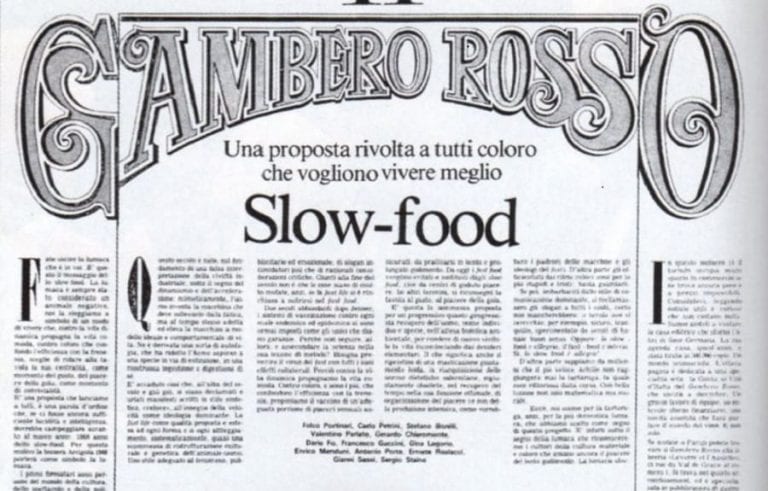

 What changes for the export of Italian wines to China under the new regulations?
What changes for the export of Italian wines to China under the new regulations? “Forget dealcoholised wines. The future is Komb(w)ine.” Moser and Ravizza present a new grape must-based product
“Forget dealcoholised wines. The future is Komb(w)ine.” Moser and Ravizza present a new grape must-based product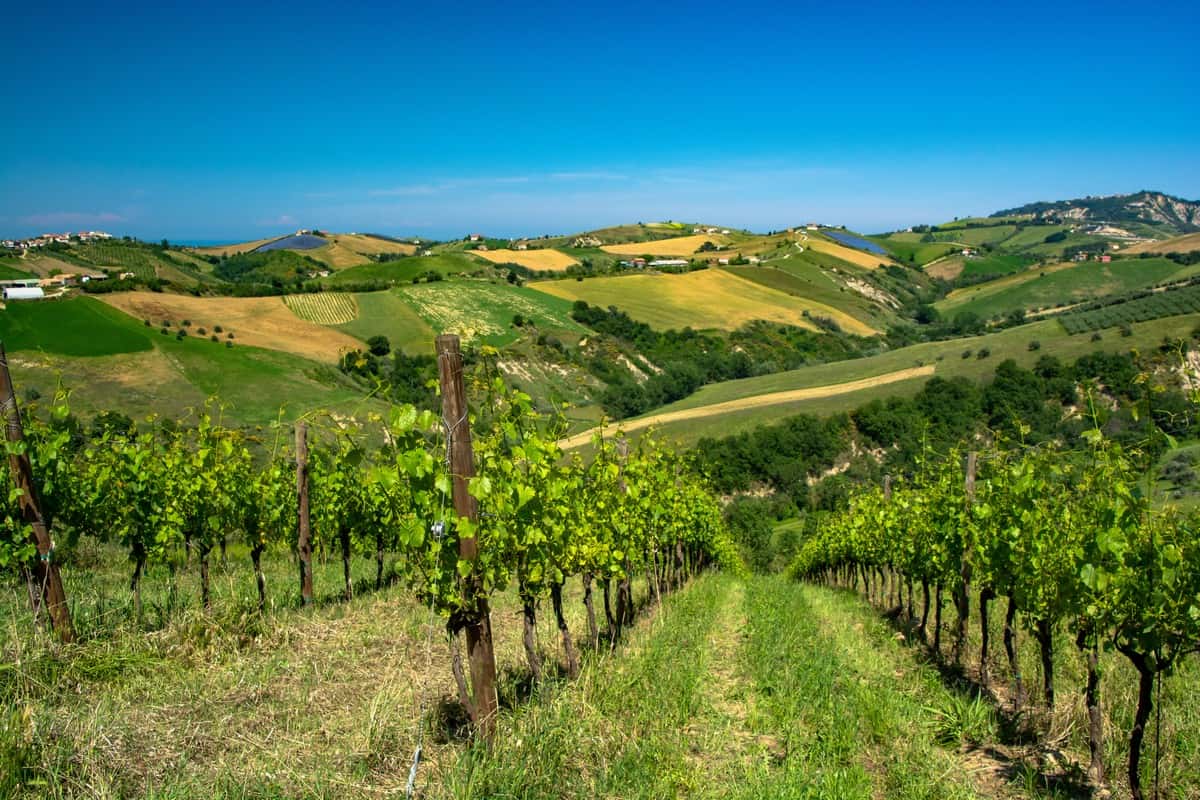 Global wine consumption at a historic low and vineyards in decline. The OIV report outlines a 2024 to forget
Global wine consumption at a historic low and vineyards in decline. The OIV report outlines a 2024 to forget Oenologist Riccardo Cotarella will also produce dealcoholised wine: "My first bottle will be out in October and it won’t be bad"
Oenologist Riccardo Cotarella will also produce dealcoholised wine: "My first bottle will be out in October and it won’t be bad"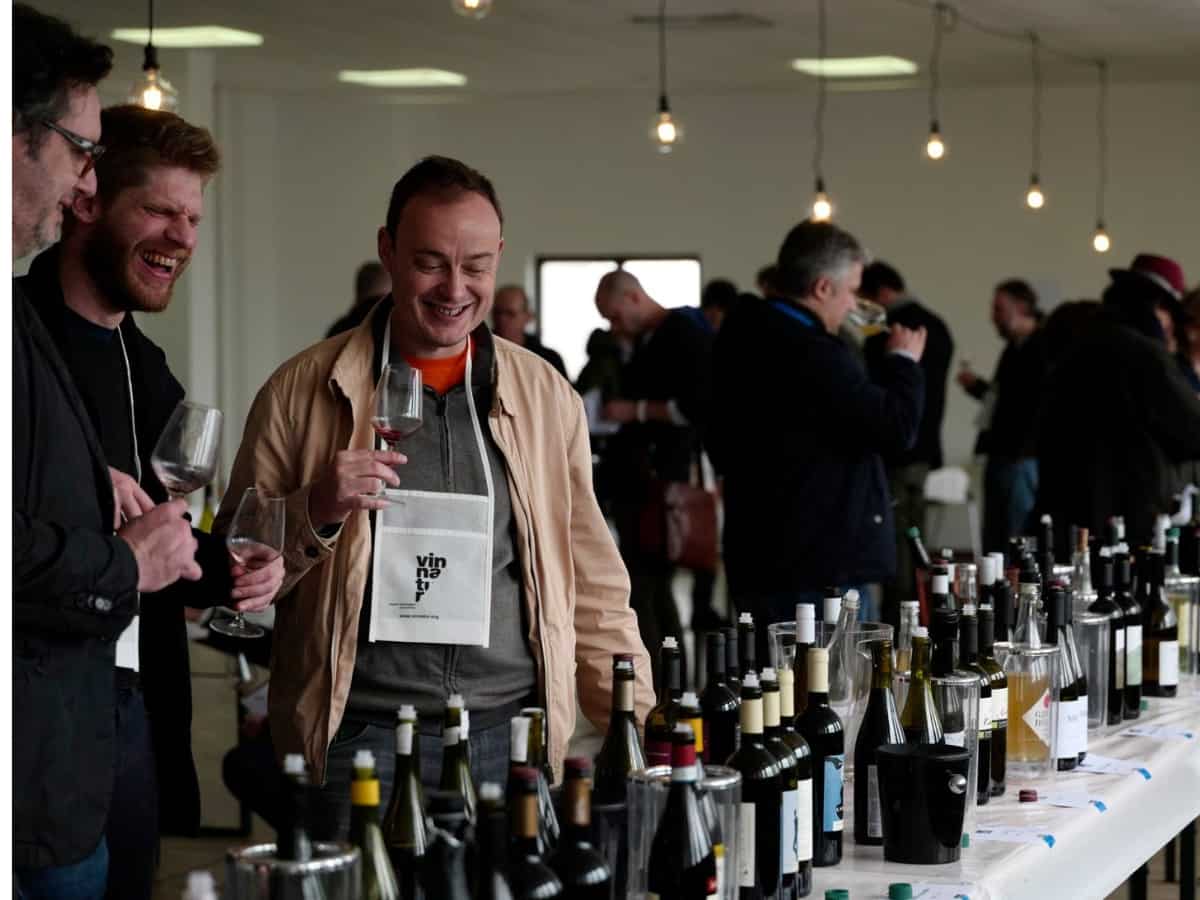 Dear natural wine world, enough with the constant polemics. If you don’t want to self-ghettoise, self-criticism is needed
Dear natural wine world, enough with the constant polemics. If you don’t want to self-ghettoise, self-criticism is needed




